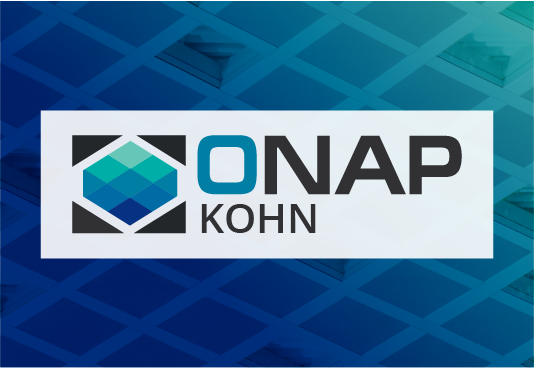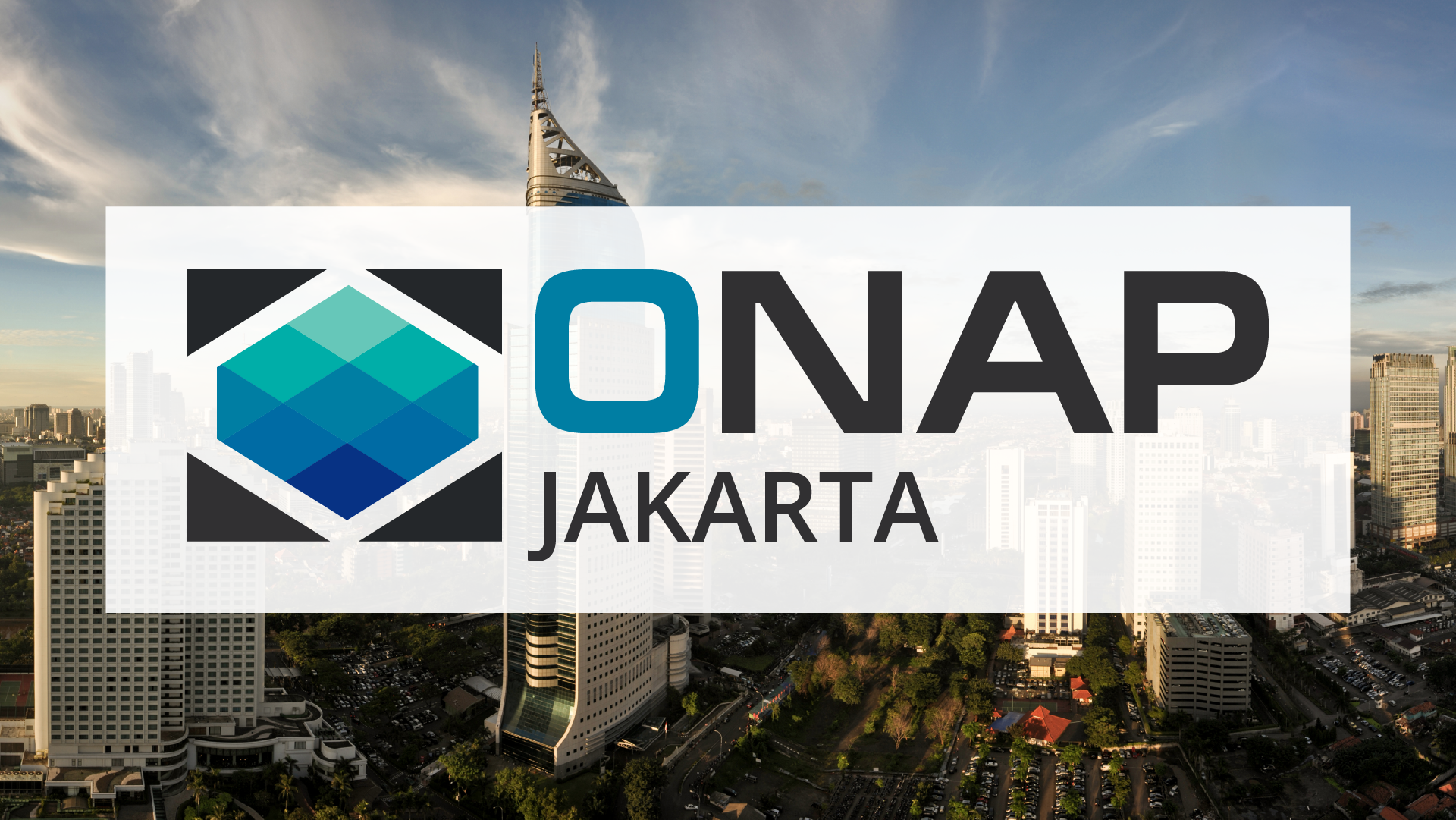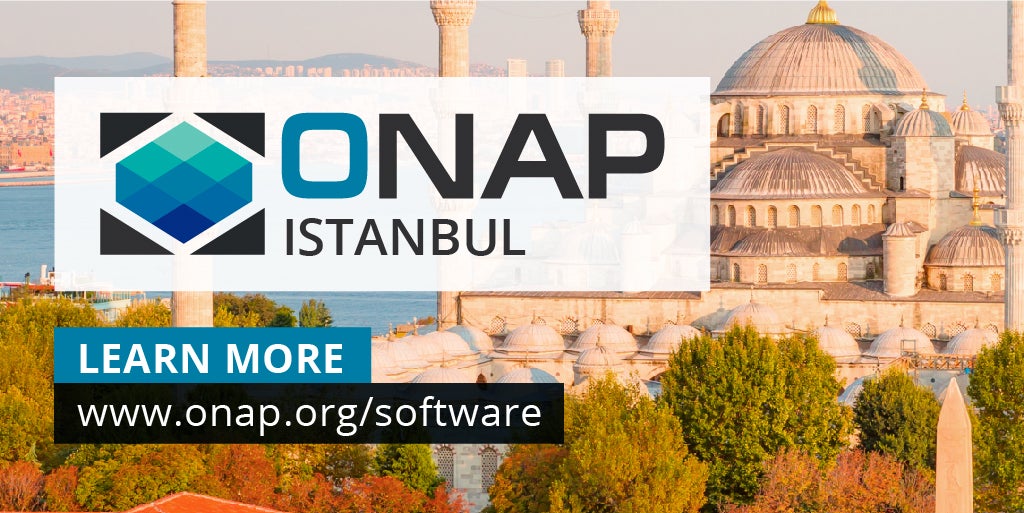- Continued community expansion and alignment make ONAP center of gravity among Members, End Users, SIs, Vendors, OSS groups, and SDO organizations
- Major blueprints and 5G features focused on global deployments and scale
- ONAP now plays an integral role in compliance and verification program (OVP)
- Increased adoption and commercial ecosystem support reaches mainstream tipping point
San Francisco, July 9, 2019 – LF Networking (LFN), which facilitates collaboration and operational excellence across open networking projects, today announced the availability of ONAP Dublin and the addition of six new members. ONAP’s fourth release, Dublin, brings an uptick in commercial activity – including new deployment plans from major operators (including Deutsche Telekom, KDDI, Swisscom, Telecom Italia, and Telstra) and ONAP-based products and solutions from more than a dozen leading vendors – and has become the focal point for industry alignment around management and orchestration of the open networking stack, standards, and more.
Combined with the availability of ONAP Dublin, the addition of new members (Aarna Networks, Loodse, the LIONS Center at Pennsylvania State University, Matrixx Software, VoerEir AB, and XCloud Networks) continues LFN’s global drumbeat of ecosystem growth for accelerated development and adoption of open source and open standards-based networking technologies.
“It’s great to see such robust ecosystem growth with new deployments, new commercial adoption, and new members,” said Arpit Joshipura, general manager, Networking, Orchestration, Edge & IoT, the Linux Foundation. “ONAP is now a focal point for industry alignment around MANO, conformance and verification, and standards collaboration. Dublin specifically brings 5G network automation for secure, standards-aligned global deployments on any cloud of any size or location.”
“Beyond the technical accomplishments, Dublin highlights the maturity of our ONAP Community,” said Catherine Lefèvre, ONAP TSC Chair. “The relationship between carriers and vendors has grown even stronger through cooperation in many areas, including development, security and integration. For example, Swisscom and Samsung played significant roles in this release. Their collaboration with other carriers and vendors highlights the ‘innovate together’ spirit that prevails within the ONAP community. Swisscom drove the broadband service use case, collaborating with member vendors of the ONAP open source community in development and testing. Samsung performed penetration tests that identified new requirements that were taken up as a priority by the ONAP Security Subcommittee led by Orange.”
End-User Deployments Drive Commercial Activity with ONAP Dublin
Telcos and vendors alike announced new production deployments of ONAP during the Dublin release cycle. Major operators leverage ONAP to enhance consumer mobility services (AT&T) and monitor the quality of network management system access across several European countries (Orange). Concurrently, carriers including Bringcom, China Mobile, China Telecom, Deutsche Telekom, KT, Reliance Jio, Swisscom Turk Telecom,Telstra, and TIM conduct testing, PoCs, or trials that may result in additional production deployments by the end of 2019.
On the vendor side, Aarna Networks, Amdocs, BOCO, Huawei, and ZTE announced a pure-play ONAP distribution or products based on ONAP. In addition, new demos and support services were made available by Accenture, Ampere, Arris, Ciena, Ericsson, iconectiv, Netsia, Nokia, Pantheon, Ribbon, Rift, Tech Mahindra, and Wipro.
The latest deployments signal ONAP’s continued growth among end users.
Additional updates in ONAP Dublin include:
- New and Enhanced Blueprints:
- Dublin introduces a new residential connectivity blueprint, Broadband Service, to demonstrate multi-gigabit residential connectivity over PON using ONAP.
- The multi-release 5G blueprint adds enhancements to PNF support, performance management, fault management (PM, FM) monitoring, homing using the physical cell ID (PCI), and progress on modeling to support end-to-end network slicing in subsequent releases.
- The CCVPN blueprint now includes dynamic addition of services and bandwidth on-demand.
- OVP Enhancements: In April, an expanded OPNFV Verification Program (OVP) was launched that includes VNF verification through publicly-available VNF compliance test tooling based on requirements developed within the ONAP community. While OVP checks against industry-wide requirements, it does not check VNF compliance against operator-specific requirements (e.g. VM flavors, dataplane acceleration technologies, and so on). For this reason, Dublin adds a Vendor Software Product (VSP) compliance check in SDC to fill this gap.
- Standards Alignment: Illustrating the significance of ONAP both as a reference architecture and reference code for an automation platform, LF Networking collaborates with standards bodies (e.g. 3GPP, ETSI NFV ISG, ETSI ZSM ISG, MEF, and TM Forum) to provide reference architectures for standards development. (For more information on how open source and open standards are collaborating, watch this keynote panel discussion from Open Networking Summit North America).
More details on ONAP Dublin are available at this link. ONAP’s next release, El Alto, is expected later this year and will include minor requirement updates focused on S3P, among other enhancements.
New LFN Members
The newest LFN members will work alongside the 100+ existing member organizations to drive development, testing and implementation of LFN’s networking projects, including FD.io, ONAP, OPNFV, OpenDaylight, PNDA, SNAS, and Tungsten Fabric. Aarna Networks, Loodse, Matrixx, VoerEir AB, and XCloud Networks join as Silver members while the LIONS Center at Pennsylvania State University is the newest Associate member.
Upcoming Community Events
Open Networking Summit Europe, the industry’s premier open networking event enabling collaborative development and innovation across enterprises, service providers and cloud providers, takes place September 23-25 in Antwerp, Belgium. Early Bird registration runs through July 28th.
Support from New and Existing LFN Members:
Aarna Networks
“5G and edge computing are a once in a generation disruption that will fundamentally transform enterprise and telecom networks. This new world will be software driven using technologies such as NFV, SDN, and cloud computing, and will require sophisticated orchestration, management, and automation,” said Amar Kapadia, co-founder at Aarna Networks. “By Joining LF Networking, we can collaborate more deeply with the ONAP community and related projects such as OpenDaylight, Tungsten Fabric, and PNDA.”
AT&T
“The Dublin release represents a major leap forward in third-party vendor and carrier support of ONAP,” said David Lu, vice president, SDN Platform & Systems, AT&T. “With more vendors now utilizing ONAP to offer new services and solutions, this latest release marks a tremendous win in ONAP’s platform strategy and in the continued effort to expand community and industry adoption. Additionally, the Dublin release not only provides many new automation features in support of the DevOps model, but also supports the TM-Forum Open API initiative and the BOS
Catalyst project, both of which demonstrate the success of the ONAP platform for industry mainstream automation and transformation.”
Ericsson
“Congratulations to the ONAP community on their Dublin release,” said Anders Rosengren, Head of Architecture & Technology, Business Unit – Digital Services, Ericsson. “Ericsson is at the forefront of 5G evolution driving innovation across cloud native, AI/ML, Automation, Orchestration, Edge computing and supporting and contributing code to various open source projects. In ONAP, Ericsson is one of the leading contributors of code. We are looking forward to continuous growth of ONAP to support more use cases across 5G, cloud native and Edge in the coming releases.”
Huawei
“We are happy to see the release of the fourth version of ONAP, which is more mature and easier to deploy. The new use case of broadband service (BBS) which Huawei collaborated with Swisscom has once again proved ONAP’s powerful platform capabilities and wide adaptability. The telecom industry has taken a big step forward in building a unified network automation de-facto standard based on ONAP. We will continue to work with industry partners to make contributions to a more efficient, open and prosperous ecosystem for the network industry,” said Bill Ren, Chief Open Source Liaison Officer, Huawei
Loodse
“By joining LF Networking, we look forward to contributing to innovations in cloud native networking and bringing the communities together for mutual benefit,” said Sebastian Steele, co-founder and CEO, Loodse. “With our practical experience, we can help LF Networking to integrate a cloud native and Kubernetes perspective into its projects and find solutions for real-world use-cases. And, personally, I look of course forward to getting to know many members of the community at industry events.”
MATRIXX Software
“MATRIXX is extremely pleased to join the LF Networking group at a time when cloud native network functions and open source are more important than ever for service providers,” said Marc Price, Global CTO of MATRIXX Software. “As a Silicon Valley based company committed to innovation and digital disruption, MATRIXX is uniquely positioned to aid LF Networking members as we advance a new generation of services inspired by web scale best practices.”
Nokia
“With ONAP Dublin release, Nokia has been driving ONAP support for 5G readiness and enhancing the service domains beyond the initial scope – towards 5G radio, edge cloud and fixed broadband. Supporting virtualized and physical network functions in all of these domains is key for managing and orchestrating networks and services end-to-end,” said Ron Haberman, Chief Technology Officer, Nokia Software. “The support of open source projects like ONAP, complementing and integrating with our commercial solutions, remains an integral part in Nokia’s overall portfolio strategy as an end-to-end solution provider. Consequently, openness, interoperability, and usability are key design principles we are pushing together with our partners in each release.”
Orange
“Orange strongly believes that ONAP is the solution to align industry for network automation” said Emmanuel Bidet, vice president of Orange Labs Networks on Core Networks, Automation and Security. Orange adopts a pragmatic step-by-step approach by deploying in production a subset of ONAP components to monitor the quality of network management system access in several European countries. Orange also setup a comprehensive 18 days ONAP training to facilitate ONAP adoption in the company. We also see significant move in the community to better align the priorities with the operational requirements. As a founding member of ONAP, Orange is still increasing its commitment to ONAP evolution aligned with our business priorities. In addition to the community OpenLab platform used by 150+ users , Orange leads the ONAP security subcommittee and introduced a new chain tool to improve the ONAP CI/CD process. Orange is also acting to align ONAP with standardization bodies (TMF, ETSI/NFV, 3GPP …).”
Swisscom
“Open source software is in the core of most of Swisscom’s products and internal systems and platforms. We believe that the LFN projects, and especially ONAP, play a key role in making the telecom industry more open.” said David Pérez Caparrós, Lead DevOps Engineer, Swisscom. “At Swisscom, we strive for high levels of automation and seek for a more standardized way to build the next generation of our current net-near IT platforms. We are evaluating how ONAP can help us to achieve that goal. As a first step, the BBS (Broadband Service) use case leverages ONAP’s automation capabilities to enable our customers to move their CPE with services automatically configured at the new location – this helps increase customer satisfaction, while reducing operational costs and complexity in IT procedures.”
VoerEir AB
“As networks transform to open source it is important that the industry come together to work collectively on clear technical demarcation points to reach the next level of maturity,” said Patric Lind CEO of VoerEir AB. “We have, for the last few years, been active in the OPNFV, Open Networking Summit and other open source communities and are excited to take an even more active role. The maturity of open source changes the focus towards the areas of interoperability and production-grade networks where we believe VoerEir AB has a lot to contribute.”
XCloud Networks
“XCloud is excited to support LF Networking and work with the great minds moving the industry forward,” said Alex Saroyan, Founder & CEO, XCloud. “We strongly believe that the future data center will encompass, in part, the agility to enable the network to become a part of the computing fabric. After learning from customers for more than two years we are focused on bringing to market the tooling and service required to facilitate this change. By joining LF Networking we are hoping to meet the folks in the industry ready to deliver solutions in line with the vision established by the open networking community.”
About the Linux Foundation
The Linux Foundation is the organization of choice for the world’s top developers and companies build ecosystems that accelerate open technology development and commercial adoption. Together with the worldwide open source community, it is solving the hardest technology problems by creating the largest shared technology investment in history. Founded in 2000, The Linux Foundation today provides tools, training and events to scale any open source project, which together deliver an economic impact not achievable by any one company. More information can be found at www.linuxfoundation.org.
# # #
The Linux Foundation has registered trademarks and uses trademarks. For a list of trademarks of The Linux Foundation, please see our trademark usage page: https://www.linuxfoundation.org/trademark-usage. Linux is a registered trademark of Linus Torvalds.






 The LF Networking communities from CNTT/OPNFV, and ONAP participated in the first ever LFN joint “
The LF Networking communities from CNTT/OPNFV, and ONAP participated in the first ever LFN joint “ I’m pleased to report that the
I’m pleased to report that the